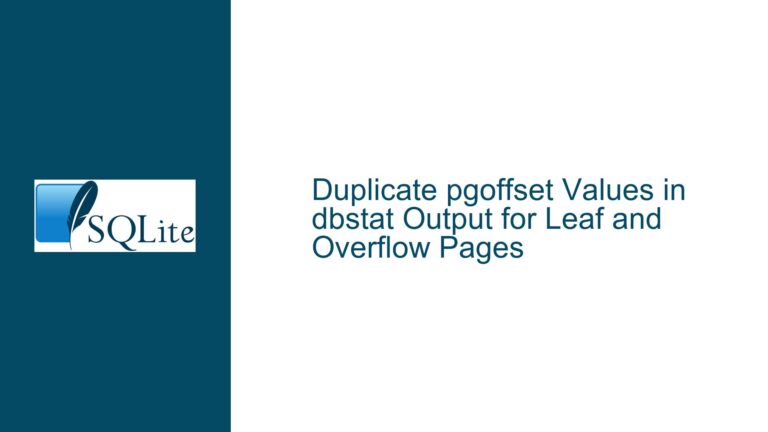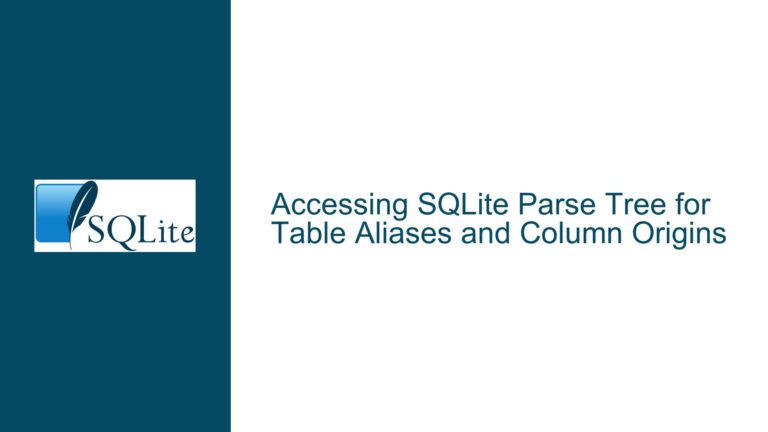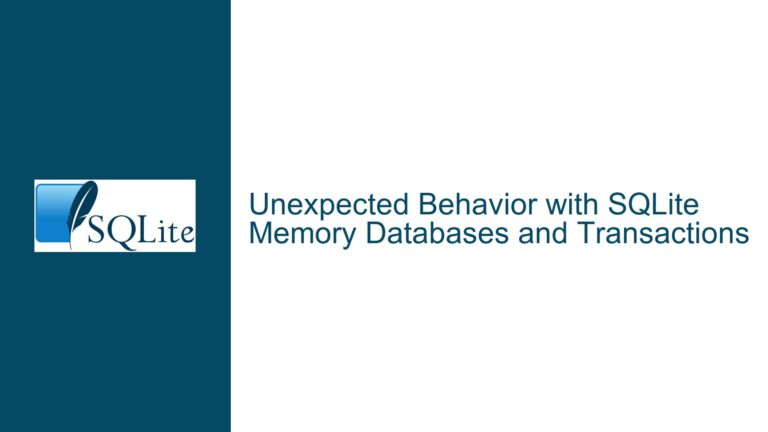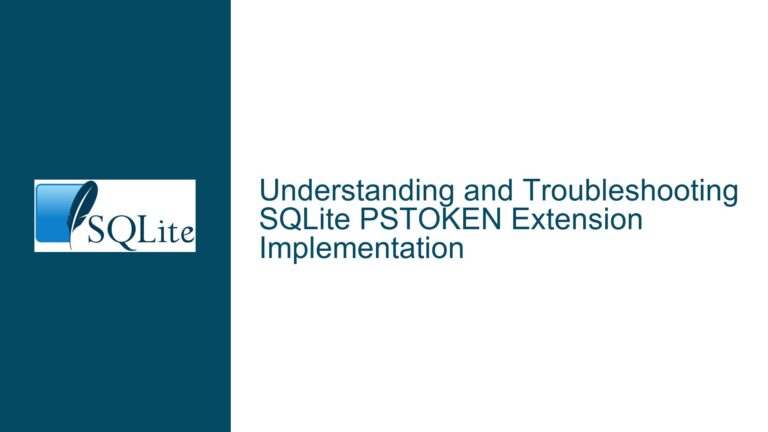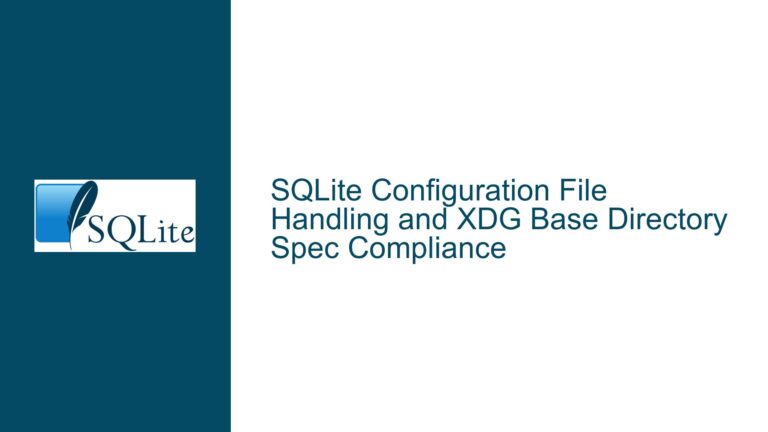SQLite Shared Cache Mode: Implementation, Limitations and Error Handling
Understanding SQLite’s Cache Architecture and Shared Mode Complexities
SQLite’s caching mechanism represents a critical component of its architecture, featuring two distinct caching approaches: private page cache and shared cache. The private page cache operates independently for each database connection, while shared cache mode enables multiple connections to share the same data and schema cache within a process. This sharing capability was initially introduced in SQLite version 3.3.0 (2006) specifically for embedded server scenarios, with significant updates in version 3.5.0 (2007) that expanded sharing capabilities across entire processes rather than limiting them to single threads.
The shared cache implementation was originally developed to address specific use cases, particularly for mobile devices where concurrent database access needed to coexist with limited memory resources. A prime example was the Symbian operating system, where developers needed to handle scenarios such as accessing contact information during incoming calls while the database was being synced. However, the introduction of WAL (Write-Ahead Logging) mode in 2010 provided a more robust solution for many of these concurrent access scenarios.
The cache sharing behavior is controlled through both compile-time options and runtime flags. When enabled, shared cache mode allows multiple connections to the same database to share both data and schema caches, potentially reducing memory usage and I/O operations. However, this sharing comes with additional complexity in terms of locking semantics and error handling, particularly when dealing with SQLITE_LOCKED errors versus SQLITE_BUSY scenarios.
Architectural Implications and Implementation Challenges
The implementation of shared cache mode introduces several architectural considerations that developers must navigate. The SQLITE_OPEN_SHAREDCACHE flag affects database connections created through sqlite3_open(), sqlite3_open_v2(), and sqlite3_open16(). When this flag is used, connections become eligible for shared cache mode, regardless of the global setting controlled by sqlite3_enable_shared_cache().
The architectural complexity manifests in several key areas:
The shared cache implementation is deeply integrated into SQLite’s btree subsystem, as evidenced by the sqlite3BtreeOpen function in btree.c. This integration point is crucial for understanding how shared cache behavior is controlled and how error conditions are handled.
Memory management becomes more intricate with shared cache mode, as the system must carefully manage shared resources across multiple connections. The SQLITE_DBSTATUS_CACHE_USED and SQLITE_STATUS_PAGECACHE_USED metrics provide insight into cache utilization, though their behavior can be counterintuitive.
Error handling presents particular challenges, especially when compile-time options like SQLITE_OMIT_SHARED_CACHE are used. The current implementation doesn’t properly signal errors when shared cache functionality is requested but unavailable due to compile-time exclusion.
Implementing Robust Solutions and Error Handling Mechanisms
To address the complexities of shared cache mode, several implementation approaches and solutions can be considered:
For applications requiring shared in-memory databases, the memdb VFS provides an alternative to shared cache mode. This approach requires careful attention to filename formatting, specifically requiring paths to begin with a forward slash for proper sharing behavior.
Error handling can be improved by implementing additional checks in the sqlite3BtreeOpen function. A proposed solution involves adding specific error checking code when SQLITE_OMIT_SHARED_CACHE is defined:
#if defined(SQLITE_OMIT_SHARED_CACHE)
if( isTempDb==0 && (isMemdb==0 || (vfsFlags&SQLITE_OPEN_URI)!=0) ){
if ( vfsFlags & SQLITE_OPEN_SHAREDCACHE ){
return SQLITE_ERROR;
}
}
#endif
This modification ensures proper error signaling when shared cache functionality is requested but unavailable due to compile-time options.
For applications that must maintain compatibility with older systems while leveraging modern features, careful consideration of cache mode selection is essential. The SQLITE_OPEN_PRIVATECACHE flag can be used to explicitly opt out of shared cache mode for specific connections.
When implementing shared cache mode, developers should be aware of the distinct error conditions that can arise. The SQLITE_LOCKED result code indicates conflicts within the same database connection or between connections using a shared cache, while SQLITE_BUSY signals conflicts between different database connections.
The implementation should include proper handling of URI parameters for cache configuration. The "cache" query parameter in URI filenames provides an additional method for controlling cache behavior, with "cache=shared" enabling shared cache and "cache=private" enforcing private cache mode.
For in-memory databases, special consideration must be given to the database name format. Since SQLite version 3.7.13, shared cache can be used with in-memory databases, but only when created using URI filenames. The traditional ":memory:" database name does not support shared cache mode for backward compatibility reasons.
Proper error handling should account for the various scenarios where shared cache operations might fail, including:
- Memory allocation failures (SQLITE_NOMEM)
- Read-only database access attempts (SQLITE_READONLY)
- I/O errors during cache operations (SQLITE_IOERR)
- Lock conflicts between connections (SQLITE_LOCKED_SHAREDCACHE)
The implementation should also consider the impact of shared cache mode on transaction isolation. While connections sharing a cache still maintain serialized isolation by default, the use of shared cache mode can lead to more frequent SQLITE_LOCKED errors when concurrent writes or uncommitted transactions reference the same tables.

